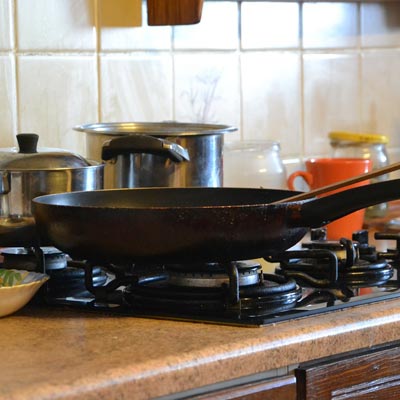Call Now: 07 578 2289

Whether you love to cook or hate the very thought of it, every kitchen needs a cooktop.
Whatever style you’re considering, from a basic electric model to a high-tech induction surface, there are several big decisions to make.
One of the first things you’ll need to consider is how much space you have, taking into account your kitchen’s design. This will determine the size of the cooktop you’ll need. If your kitchen is limited on space you’re probably after a 60cm four burner/element cooktop.
But if you do lots of cooking, or have a larger kitchen, a 90cm five or six burner/element cooktop could be the way to go.
There are three main types of cooktops to choose from and your choice will have a lot to do with the type of cooking you’re most likely to be doing:
If you’re after instant heat control then a gas cooktop is for you.
Pros
Some rectangular cooktops with five or six burners have an oblong shaped burner to use with a grill or hotplate for barbecuing.
Cons
You’ll need to check that mains gas is available where you live. If it isn’t, and you’re really set on having a gas cooktop, then you can use bottled LPG with many models – but keep in mind this is more expensive than mains gas.
There are several options:
If you’re after a sleek and stylish design then a ceramic cooktop is worth considering. They’re also particularly useful for cooking foods that require very low temperatures, such as melting chocolate.
Pros
Cons
The ceramic glass holds the heat, so you’ll need to take care with delicate foods and remember to be careful once it’s switched off. Many models come with residual-heat warning lights that stay on until the surface drops to a safe temperature.
For extraordinary heat up and instant response to temperature changes then look no further than the new technology of induction cooktops.
Induction works via a magnetic field that essentially turns your cookware into the heating element! So the food is cooked by the heat of the cookware, not from the cooktop itself.
Pros
Cons
Ceramic and induction are by far the two main types but there are two cheaper options. They aren’t as widely available but you may still find some floating around in stores:
Radiant coil
These cooktops utilise a coil element to heat the cookware. The coils can be a hassle to clean. Some can be unplugged and removed while others have a hinge so you can lift them for easier access to the drip trays underneath.
Solid hotplate
These cooktops have a solid metal disk for each hotplate that’s slower than all other types to heat up and extremely slow to cool down which also makes them the least controllable.
You’re more likely to find these on the “old-fashioned” freestanding (or “upright”) ovens, which combine your cooktop and oven in the one unit. Note that, although not common, you can get an upright model in both gas or electric models.
Source: Choice Australia